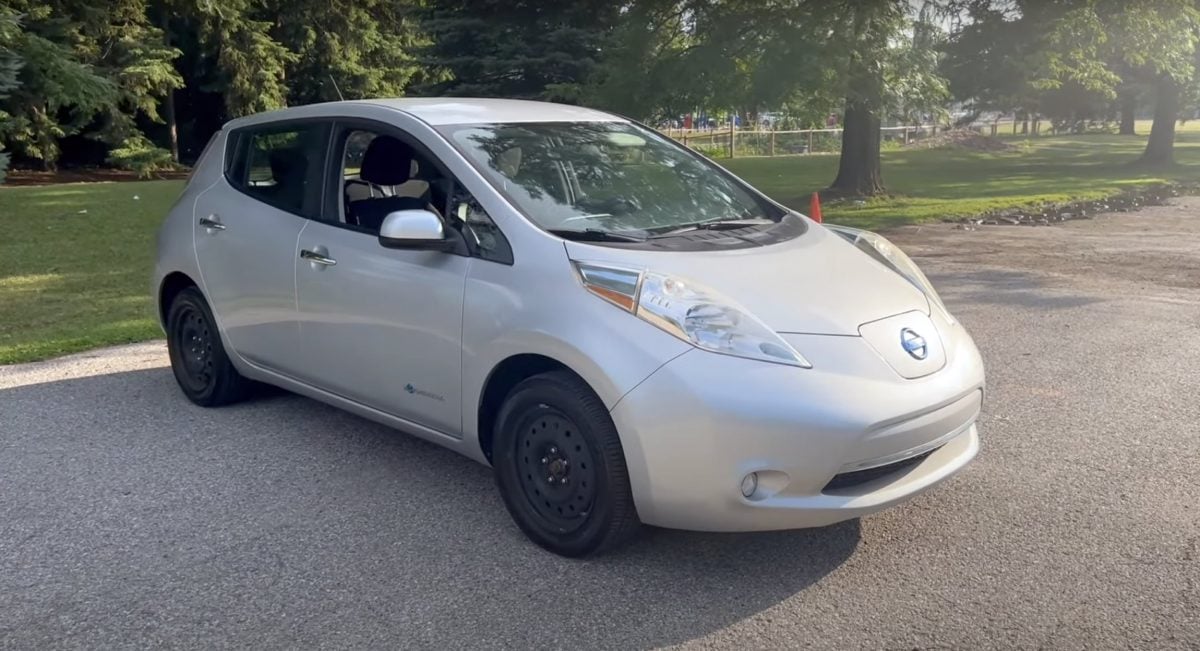People say that EVs cost less to run, but cost more to buy (than conventional ICE cars). But does that always need to be the case? Used EVs are proving to be good value thanks to depreciation, and their batteries are holding up better than expected over time. Here is an extreme example.
I needed another vehicle recently, so after some research I jumped at the chance to buy this 2015 Nissan Leaf. The 24 kWh battery pack would have 21 kWh usable when new, and mine has about 17 kWh usable 10 years later. A battery this small will not work for everyone, and definitely not great for road trips beyond your initial range. But for getting groceries and running local errands, this car is a perfect low cost tool. Cheap to buy, drive, maintain, and insure.
Battery Degradation?
The first gen Leaf makes it very easy to understand battery state of health and degradation without any specialist diagnostic tools. I wish every EV made it this easy. There are 12 thin battery bars to the right of the state of charge battery bars that show how much capacity has degraded. The first and last of the 12 battery bars are weighted double, so pretend there are 14 bars. So in the case of my 10/12 bar battery, I have 11/14 capacity, or just about 79% of original usable capacity! Pretty good for a 10 year old car with 130,000km / 80,000 mi on the odometer.
Cost
Here in Canada, first gen Leafs can be purchased as low as $4k and upwards of $10k. It mostly comes down to milage and battery health. I bought my car for just over $5k Canadian, which came to $6k after taxes and registration. I also needed about $1000 for new tires and replacement lower control arms and tie rods. For a 10 year old used car, it was pretty much expected some work will need to be done to pass safety inspection. But now it drives beautifully.
Limitations
This Leaf is a fantastic second car for local errands. It will happily to a short roundtrip commute, too. But it’s not a long distance car. I still have my Tesla Model Y for road trips.
The first limitation is of course battery capacity. With 10 battery cars, I can drive 100km/60mi around town with AC and a healthy battery buffer. Highway range is more like 80km/50mi because it appears to be less efficient on the highway than even my much larger Model Y.
The second limitation is charging and thermal management. The this Leaf used CHAdeMO connectors for DC fast charging. While those are still somewhat plentiful, they are not as common as CCS. We will probably see CHAdeMO phased out over time. BUT, the lack of liquid thermal management of the battery pack means it will warm up after repeated fast charging and limit performance. This is the real deal breaker for road tripping, especially in hot weather.
Having all that said. I’m so happy with my new (to me) Leaf. It will do 80% of my drives without dropping a sweat. It will most likely always stay within 30km/20mi radius of it’s level 2 home charger. If you’re not ready to fully commit to EVs, you can have your gas car for road trips and a second car like this Leaf for the local errands.
Considering buying a Tesla? Use our referral link to get 3 free months of FSD, and help support our content.
